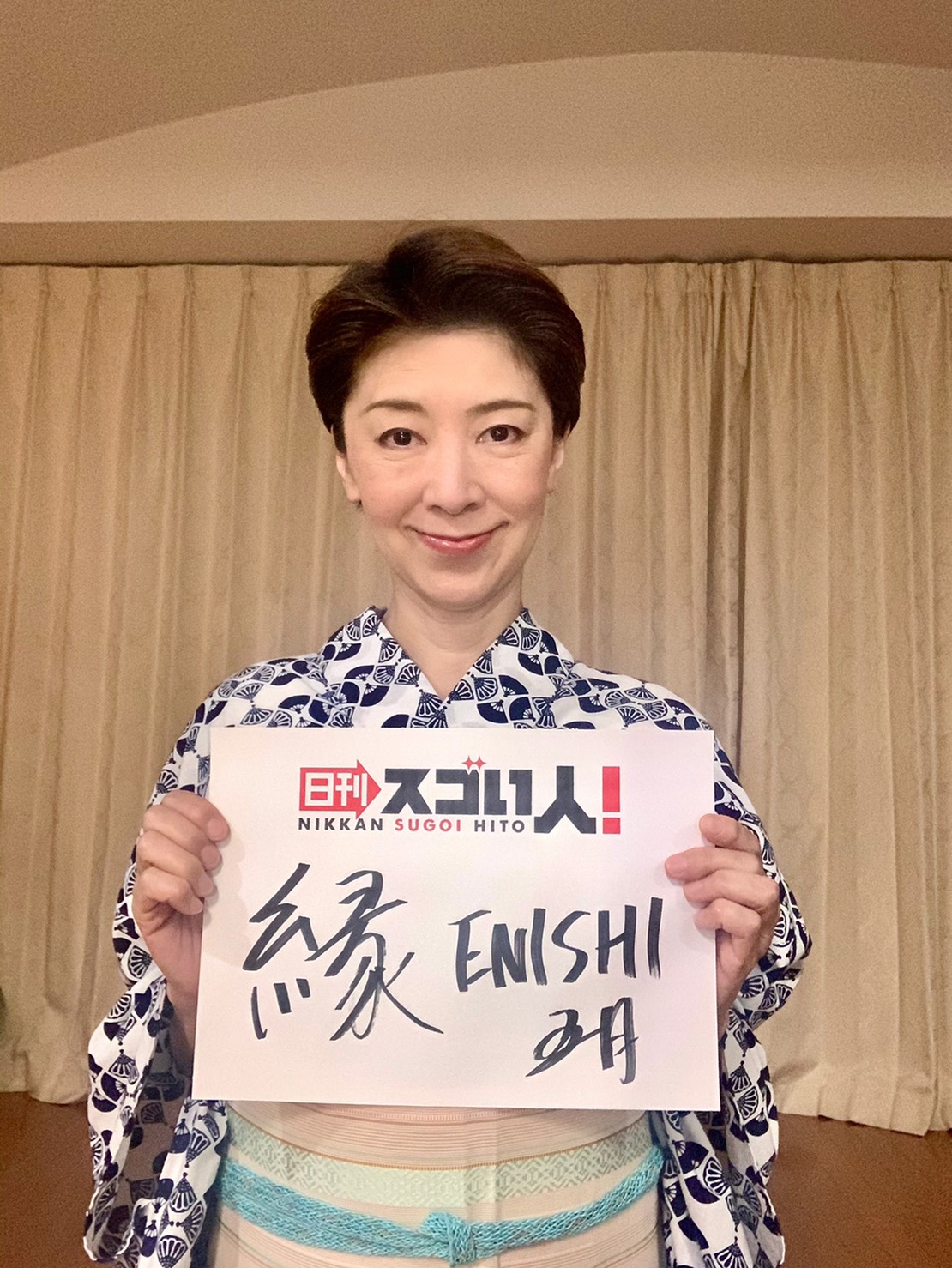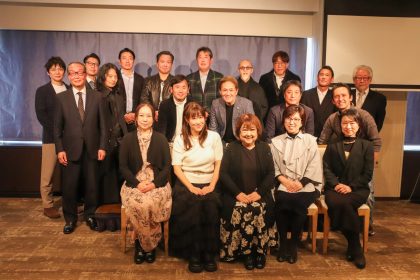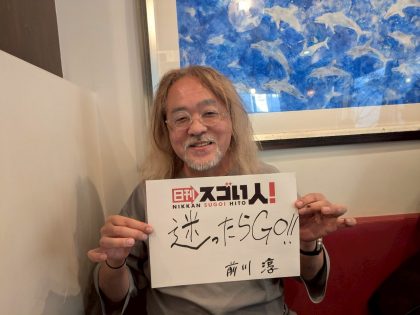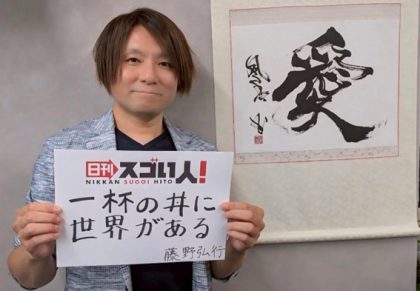
DAY2
Traditional Japanese Dance, Instructor of Onoe Ryu, Ms Onoe Satsuki
Highlights
What was lost in the Earthquake.
Following the path of Traditional Japanese dance to the end
Connection to people affected by the Corona Pandemic
The Earthquake attacked my hometown,Kobe
The day the Earthquake struck in Kobe, I was in Tokyo, but my family were all present in Kobe: the site of the Earthquake, and so experienced the full brunt of it. My grandparents', my aunt's, my uncle's and my cousin's houses, were all heavily damaged.
Their houses were in Hyogo ward, a town which since long ago, has housed a long shopping arcade.
The fires caused by the Earthquake completely burned down a town close by, Nagata Ward.
However, at the time there were terrible fires all over Kobe, and nearly all of my relatives suffered from the fires.
As an example of how ferocious the fires were, the ward that my elementary school was situated in was all burned to the ground.
The only thing left standing was the school.
From where my house stood to the school, there was nothing left to burn.
Not one building.
To this day I will never forget that view.
I was so relieved that not one of my relatives were killed in the catastrophe.
The inside of my parent's pharmacy was left in complete disarray, but building was still standing.
At the start, that is.
Therefore, firstly my father worked his hardest to help those injured.
He gave out disinfectant.
Then he went to help the families in the neighbourhood whose houses had been knocked down, looking for people trapped under the rubble.
The earthquake occurred in the early hours of the morning, but it was such a great disaster that by the time evening rolled around, there was still lots of work to be done rescuing people.
There was no heavy machinery available.
As this was happening the arms of the flames reached out further, and the wind started blowing in our direction.
The 2nd street was on fire then the 3rd street started burning.
We were the 6th street, but little by little the flames drew nearer.
Then they decided that doing any more would be difficult, so people took refuge.
The cheerful feelings of the children of Kobe
At 10am on the day of the earthquake I got a miraculous call from my mother.
She dug the phone out of the debris on the second floor, then decided to try calling.
The call cut out, but I could see the fires happening on the news, so I guessed that she had escaped.
Therefore, I was really relieved.
If I hadn't got this call then I would have been truly worried, not knowing whether they were alive or dead.
Seeing the red flames burn against the night sky, and the image of my parent's home covered in flames, I was horrified.
I sat there praying fervently that my family would be okay.
Then 2 or 3 days later I got a call from my mother.
“Everything has been burned. Your pictures from Takarazuka, your green Hakama (formal skirt for a kimono), your old school uniforms, all of it has been burned.
Sorry.”
I didn't care about any of that, I was just relieved and thankful that she had survived.
From then on when I think of it, I remember that even though such a travesty hit Kobe, the people were so bright, looking strongly towards the future.
Afterwards I heard about this from my parents, but, the official shelters became so busy that a sushi shop on the 2 and 3rd floor of a new style building allowed people in for shelter.
At the time the live fish tank was broken and the freezer wasn't working, so the owner of the Sushi shop put on a big feast for the people inside.
So it seems that the even though they were surrounded by such tragedy, the people of the neighbourhood were still able to enjoy a marvellous feast (laughs).
These were the parents I had been in lost in despair, worrying about whether they were alive or dead (laughs).
However, upon hearing this story I couldn't help but think, “that's just like the people of Kobe”.
I don't know why, but the people of Kobe are not easily disheartened, instead always looking forwards.
Somehow that is how they've turned out.
My grandmother is originally from Fukagawa in Tokyo. When she was 13 she experienced the Great Kanto earthquake (1923) first hand.
After all this time most people would probably think there's no-one left alive who experienced both the Great Kanto Earthquake and the Great Hanshin Earthquake, but my grandmother can directly compare them and said the Kobe one was especially viscous.
The fate and bonds of Takarazuka Old Girls
Whilst all this was happening I was still in Tokyo pursuing my traditional Japanese dance dream.
When it comes to age I could be considered a late bloomer, so I had to work hard you know.
2 years after gaining fame I became an instructor, and opened my own school.
In Kobe there is an old town called Hanakuma, which in old times was like Gion in Kyoto (the Geisha district in Kyoto), though of course all the Geisha were now already long gone.
I contacted my old acquaintances in Takarazuka and asked if they wouldn't mind helping with putting on a traditional Japanese dance show there.
So with 4 people who were members of Takarazuka at the same time as me, we put on the show Enju.
It was very much Takarazuka style; modern music, but with a traditional Japanese dance styled composition.
It seems news of our performance reached the Rotary Club (a humanitarian non-profit) and some live music venues.
Mixing in up-tempo music with faster choreography seemed to peek people's interest, and many people contacted us about it.
Even now when we have time (and with a few changes to the members) we put on live shows.
We are all from Kansai, so it's a joyful and fun live show. In fact, we even came to the attention of the Giant of the All Hanshin Giants Manzai comedy duo, who said “it's more interesting than all the other entertainers in the area” (laughs).
A song of tranquility for the people
During the Corona epidemic I wondered whether there wasn't something we could do to help, so I reached out to other ex-members of Takarazuka and asked whether we could make a remote choir recording of “When the violets bloom”.
The only other time something similar happened was when a member of the 1979 graduating class of the Takarazuka music school, Keaki Mori, sang to heal the people after an earthquake.
She went to the site of the disaster and when she sang, “the flowers bloom” and “when the violets bloom”, the people were moved and everyone understood the power of music.
Another person who after graduating became a nurse, due to their experience as a medical professional, knew of the valuable impact this could hold.
Due to the impact of the corona pandemic, our industry (theatre performances, and entertainment) was in a dire state of affairs, but we still wanted to do something for society, so we got together and had a discussion, and decided to do the only thing we could.
Just like after the major earthquakes, people's spirits were in a dire state of affairs, engulfed in a feeling of helplessness.
Many people in Japan and across the whole globe were in danger, and to protect others people were doing all in their power to not meet their friends and family face to face. Therefore, we wanted to show everyone, at this time in particular, that we are still all connected.
We uploaded the performances to YouTube, and produced up to volume 4.
This was all made possible through the good will of volunteers, but now that I think about it, everyone wants to feel needed by society or at least by someone.
By themselves people cannot do anything, but together we can combine our strengths and light a flame for society.
Therefore, this fact unexpectedly, meant that one by one every participant or fan whose heart was brightened by our efforts, became a mark of pride for us.
I made many comrades through the hard work when I was 15 year old, and now 40 years on I realized that it has coloured my life, and truly understand what can be achieved together.
Spreading Traditional Japanese Dance across the world
Through Takarazuka and traditional Japanese dance my fate has become deeply entwined within 2 worlds.
People's actions and body language act like a stamp telling those around them of their gender.
In Takarazuka I played male roles and in traditional Japanese dance I played both male and female roles.
With this heart I feel that I can get used to anyone.
I would like to share this elegant culture that has developed from these long traditions with more and more people.
Traditional Japanese dancing has the image of a traditional art that must be practised from a young age and takes a lot of money.
I started as an adult and whilst working became an instructor.
Therefore to repay all the enjoyment I've had in the world of traditional Japanese dance, an art that I love so much, I would like to spread its knowledge far and wide, to anyone, be they children or adults.
I think that when you learn how just the difference in how you move your hands can change to impression you leave on those around you, your life will change.
In a heartbeat the Corona pandemic has changed the world, but for traditional Japanese dance which has 400 years of history to be proud of, not even a second has passed.
Once the world has become able to relax again I would like to show the world the wonders of traditional Japanese dance. I feel like this is my calling.
Interview:Noriko English:Tim Wendland
◆Profile◆ Traditional Japanese Dance
Onoe School instructor Onoe Satsuki OFFICIAL Website
Original Takarazuka Moon troupe,Satsuki Rise
Member of the Traditional Japanese Dance Council
Teacher of acoustics at the Gekidan Touhai
Numerous Live and Television performances
【Article Finished】
Always with a dignified touch, the cute and pleasant happy voice of instructor Satsuki.
Captivated by her elegant kimono and cool looks.
We were allowed to view a practice session, where she lively instructed her students, and we got to experience the refreshing atmosphere created as her students earnestly studied their posture.
This time we explored the life of instructor Satsuki and learned that her joyful personality was not just fabricated for these past two days.
She has worked jobs that many people yearn for, but not many can achieve: Takarazuka male roles, sports caster and Traditional Japanese Dance instructor.
I think this is all a result of her brave struggles, hard work and strong posture.
We are grateful also for her final hint of what what she plans to do in the post corona world.









